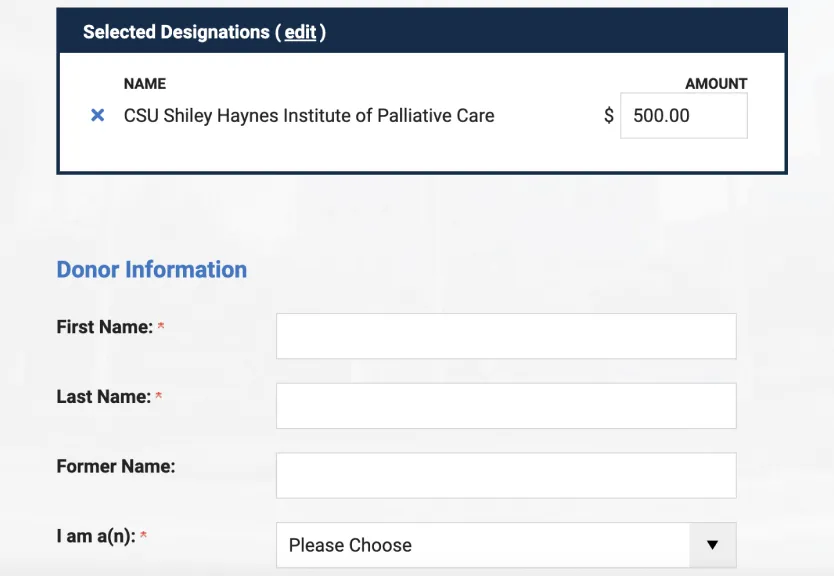Managing Pain in Advanced Illness Takes Personalized Approach, Expert Says
By Melanie Marshall
Managing pain in people with advanced illnesses requires a whole person approach, not just a prescription, said Jeffrey Sears, DO, Director of Pain Management at Hackley Hospital Pain Management Center, in Muskegon, Mich.
Sears said pain management is a fundamental skill needed in every practice, but many clinicians don’t feel confident managing chronic or acute pain. The ongoing opioid epidemic has contributed to that uneasiness, he said.
Building clinical skills, knowledge, and confidence in pain management is crucial. Untreated pain can ruin a patient’s quality of life and overwhelm them, their loved ones, and caregivers, said Sears, who is board certified by the American Academy of Pain Management.
“In advanced illnesses, managing pain, maintaining cognitive ability, and preserving a level of consciousness are probably the three most concerning problems to patients and families,” he said. Clinicians must be equipped to address those needs.
The good news is that providers are “increasingly interested in building those skills because they want to give their patients the highest standard of care,” Sears said. For pain management, that means a whole person, patient-centered approach that uses several modalities beyond traditional opioid therapy.
“The most revolutionary thing happening in pain management today is how we’re approaching pain,” Sears said. “We’re recognizing that each person is different and that we need to create a care plan that’s tailor made for them. That’s true for any clinician treating patients with chronic pain or advanced disease.”
Assessing the Whole Person
Comprehensive, evidence-based assessment is the first step, he said.
“Assessment is absolutely critical, especially for people with advanced illnesses,” Sears said. “Physical exams need to be done on a routine basis, and so does cognitive behavioral assessment.”
Many patients with serious illnesses are confronting their own mortality, which can cause significant psychosocial issues, including anxiety, he said. That can heighten pain.
“We’ve found people with anxiety experience pain to a much greater degree than people with depression, so their physical pain is much more intense,” Sears said. If anxiety is present, anti-anxiety medication may be appropriate, and can help reduce pain.
Sears said family dynamics, socio-economic issues, and other factors can also contribute to physical pain, so social work, spiritual care, and other supports are needed.
“You can’t just look at pain as an isolated modality,” he said.
Opioids and Other Therapies
Opioids can be a valuable tool for people with advanced disease, but they aren’t the only options, Sears said.
“Opioids are only one small portion of what the treatment plan should be, whether it’s acute or chronic pain, or terminal pain,” Sears said. “We have multiple pharmacological modalities – neuropathic pain medications, anti-inflammatory medications, even Tylenol – that can be used alone or in combination to reduce the amount of opioids that are necessary.”
There are many complementary or alternative therapies that can also be effective, he said.
“Oftentimes, the best approach may include physical therapy, occupational therapy, and as I said, cognitive behavioral therapy,” he said. “By incorporating a combination of modalities, and addressing other issues contributing to pain, you can reduce the amount of pain medications needed and limit their side effects.”
Continuing assessment is crucial, so the care plan can be revaluated and adjusted to fit the patient’s changing needs. Through it all, communication is key.
“The way to encourage hope and resilience in people with chronic or advanced pain is to set realistic expectations and goals, and continually be focused on those goals,” he said. “Maybe zero pain is not possible, but if patients feel like they are having good success in reducing pain, that improves their quality of life and helps them move forward.”
Opioids in Terminal Illness
For decades, opioids have been the gold standard for patients nearing end of life and many hospice and palliative care providers fear opioid restrictions could harm patients who need these powerful medications.
Dr. Sears said understanding how to safely prescribe opioids and monitor their use is especially important for patients nearing end of life and their families.
“In terminal illnesses, my concern is obviously not about whether or not a patient develops addiction because ultimately, their risk of addiction is far outweighed by the benefits of relieving their pain and suffering,” he said. “But that doesn’t mean we don’t have a high responsibility to the community at large.
“The No. 1 risk when you’re prescribing opioids for terminal patients isn’t whether they become addicted, it’s the risk of misuse or diversion,” he said. “There needs to be a tremendous vigilance and monitoring so these opioids aren’t being used by anyone other than the patient.”
That’s another reason why understanding each patient’s circumstances and needs is so important, he said.
“I’ve seen incidents where patients have sold their medications, just to help with the cost of living, or even medical treatment,” he said. “It’s a complex situation. You can’t come up with any kind of one-size-fits-all answer. You to be aware of all of the different issues.”
Again, education is key so clinicians have comprehensive strategies and know when to deploy them, Sears said. It starts with the clinician and then continues with the patient and families.
“I think it behooves every physician out there to understand the current standards of care for pain management across the whole spectrum and to be using all available remedies,” he said.




